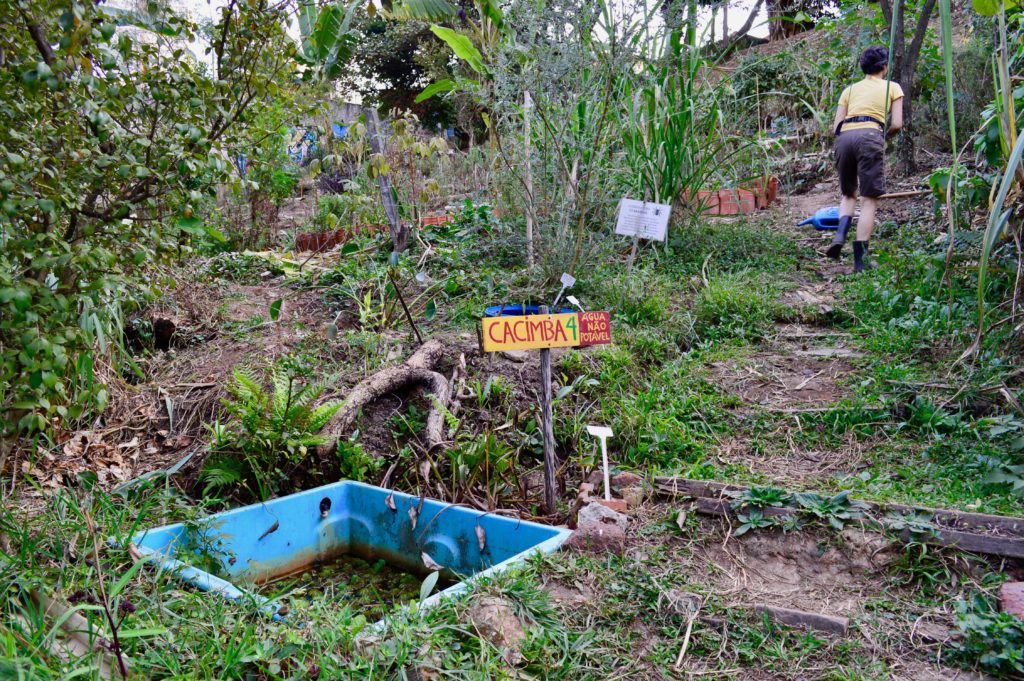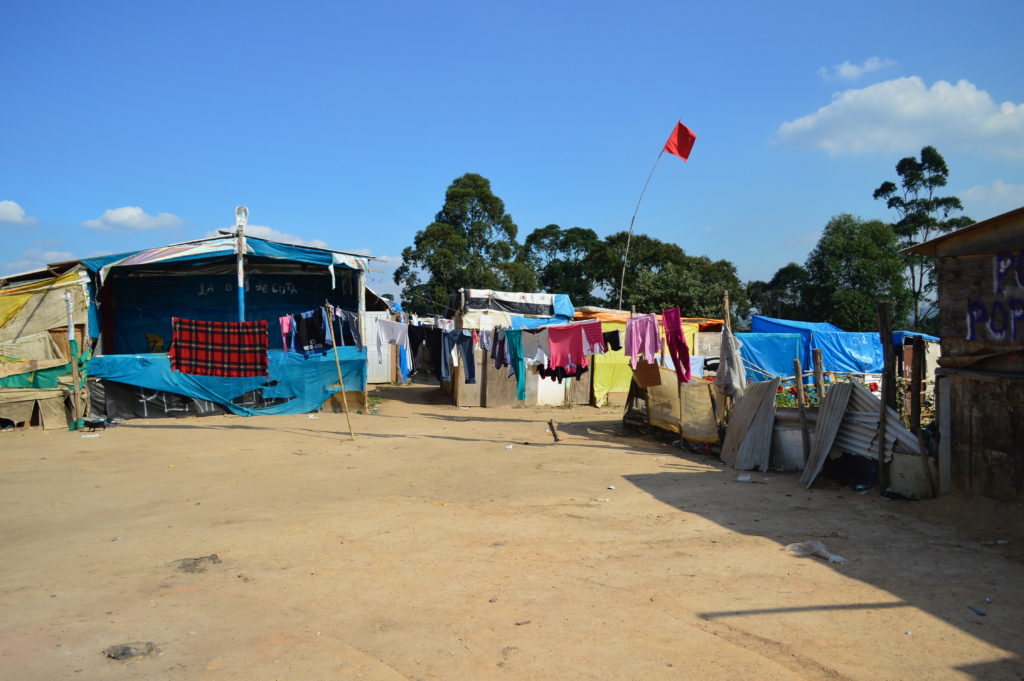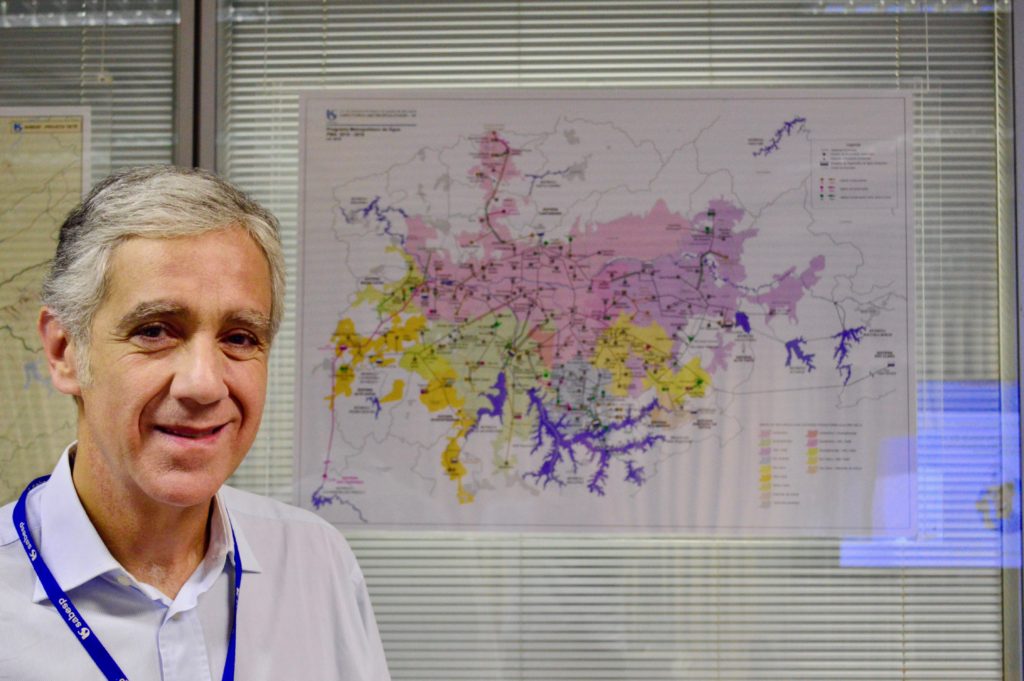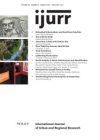The cruel optimism of climate crisis
Between 2013 and 2015, the São Paulo metro region suffered a dramatic drinking water shortage.[1] Under orders from the state’s conservative governor, the utility SABESP implemented secretive, de facto rationing. Taps ran dry—especially in poor, racialized neighborhoods—while rates of dengue and dysentery spiked. As national politics veered into their own crisis, the military war-gamed a takeover of the city. It could happen again. In November 2013, before the drought bit, water levels in the city’s main Cantareira reservoir had sunk to 40% of capacity. In November 2018, the number is 35%, and the national political crisis grimmer. The president-elect, Jair Bolsonaro, is a neofascist contemptuous of environmental governance, his vice-president a bullying general. São Paulo’s new governor, João Doria, has promised to get the “best lawyers” to defend any military police accused of murder; they already kill hundreds of people in metro São Paulo each year.
Democratic ecologies take years to construct. But an eco-apartheid regime is already forming, greening affluence for the few at the expense of the many, barbing the fences between the privileged and racialized others with state-sponsored violence (cf Akom 2011; Checker 2008; Ranganathan 2016). What could push us toward a better path?

Claudia Visoni, in a community garden that she co-founded, which taps into one of the city’s countless hidden springs to grow vegetables and revitalize a barren park, pictured in July 2018. Visoni is among the water justice activists who have sought to work with a range of social movements. Photo: Daniel Aldana Cohen
Climate crises are charismatic. They terrify, fascinate, and attract climate scholars and activists. Climate disasters, they hope, will spark change. For many progressives, the mechanism is public opinion: the weather will teach the people a lesson; newly enlightened voters will make politicians act. Further left, writers like Ashley Dawson and the Out of the Woods collective, inspired by Rebecca Solnit’s (2009) A Paradise Built in Hell, talk of “disaster communism”: solidarities forged in the midst of disaster recovery coalescing into something big and lasting. In each case, the immediacy of climate crisis would expose and disrupt the “slow violence” (to borrow a phrase from Rob Nixon) of eco-apartheid’s quiet creep. But evidence for these hopes is weak. Survey data at best finds intermittent evidence for modest shifts in climate opinions after climate-linked extreme weather. There’s no example of disaster communism outlasting the moment or turning into a movement for decarbonization.
Might climate-linked water crises buck this dispiriting trend? In a drought, the basis of immediate life is threatened. And concrete alternatives to the status quo are closer to hand. Cape Town has faced down “Day Zero”, Mexico City crawls toward catastrophe, Flint’s water has been poisoned, and São Paulo seems to be spiraling toward perpetual drought. Yet even in these cities, transformative action is elusive. Elites maintain a brutishly unequal distribution of water and conduct middling infrastructure improvements. Eco-apartheid doesn’t result from elites’ cruel intentions, but from their ad hoc measures to maintain their privileges, at whatever cost, in a context of concentrated affluence and climate-worsened scarcity. The tight time of crisis favors the slide toward eco-apartheid.
Through my research on São Paulo’s water crisis and the response to Hurricane Sandy in New York, including my work with the Superstorm Research Lab, I found that climate-linked extreme weather crisis does provide an opening for democratic ecologies—but only in the context of a longer-term project to build broad new coalitions linking social, economic, racial, and climate justice. Analytically, I argue that the politics of climate crisis largely consist in the conditions under which rooted and powerful social and economic justice groups do or do not cooperate with green policy elites who have important expertise, but who populate a different social world and approach politics in different ways. Broad coalitions with good ideas are needed to prevent eco-apartheid. Here I ask what hinders, then what enables, these coalitions.
Unequal power
Two barriers to the construction of a broad, egalitarian movement stand out. The first is simple but hidden: the very conditions that make extreme weather crises seem necessary turn those crises into hostile terrain for democratic ecologies. Progressives hope that crisis will bring people together around a common project of sustainability, with a transformative role for public institutions. But climate disasters are disastrous precisely because those public institutions and community ties are already frayed, if not shredded. In strong, egalitarian, far-sighted democracies, one wouldn’t count on crises to improve climate politics in the first place. When a crisis delegitimizes a state weakened by neoliberalism, it can just as easily wound the idea of the state as it does the idea of neoliberalism—or indeed both at once. The result? From below arise meaningful but transient mutual aid projects, which will struggle to connect to a viable alternative public project. From above, political elites maintain their legitimacy by containing crisis. Elites’ priority is the return to physical normality, through modestly tweaked infrastructural restoration, and securing water access (or other environmental goods) for the affluent and relatively powerful.
The second, linked barrier is unequal power relations. These are distinct from the social inequalities between racialized classes, and regional inequalities between places, that environmental justice and urban political ecology scholars know well. Yes, both were vividly at play in São Paulo. The topography and infrastructures of poverty made poor households in peripheral zones suffer de facto, disproportionate rationing. And water is increasingly drained from distant watersheds to maintain the big city’s overall consumption. Unequal power relations—namely institutionalized differences in access to state, economic, and symbolic resources—are what entrench those inequalities.

The New Palestine housing movement encampment, pictured in 2015, dry and hot during a severe drought. Organizers there told me of the disproportionate water shortages faced by residents of São Paulo’s periphery. President-elect Jair Bolsonaro has called members of the MTST movement terrorists and criminals. Photo: Daniel Aldana Cohen
Two intersecting dimensions of unequal power relations merit attention here: water’s connection to broader battles over the built environment, and the varying actions of green policy elites.
São Paulo’s water and sewage utility, SABESP, is a mixed public-private company, with 51% of shares held by São Paulo’s state government. SABESP and the state have preferred to pull distant water from São Paulo city’s hinterlands to confronting the city’s infrastructure and landscape needs. This forecloses an environmentally sustainable, alternative socio-ecological model pressed by most water advocates. This alternative would accelerate the urbanization of favelas and construction of new public housing, link these to an expanded and decentralized sewage treatment system, reduce pipe leakage, restore locally polluted watersheds and rivers, and reverse the city’s cultural habit of ignoring its paved-over rivers and taking distant water for granted. Together, these measures should curb consumption and make better use of local water sources.
This alternative model would require deep, coordinated investments in housing. In theory, housing movements—the most powerful mass force in the city—and environmentalists should combine forces. In practice, in a context of limited funds, green policy elites have often pushed to simply displace precariously housed, mostly Afrodescendent, residents of waterside favelas without worrying about where they would live next. More money for housing, and time for dialogue, are needed to overcome a history of mutual antagonism. During the drought, as the poor suffered the brunt of water shut-offs, a rapprochement began. Housing movements filled the street’s in the crisis’s most energetic water protests. As they began talking with environmentalists, the prospect of a working- and middle-class alliance, linking up with progressive and left political parties, threatened real change. But the alliance was fleeting. At the most dangerous hour in late 2015, rains returned and a national corruption crisis took political center stage. What’s more, as Benjamin Bradlow showed in The Boston Review, the global after-shocks of the 2008 financial crisis were then hitting Brazil, emptying the federal government’s coffers just as the city was readying a new round of investment in the São Paulo periphery’s built environment.
A handful of savvy water governance experts, especially Marussia Whately and the Alliance for Water that she led, have kept developing technically sophisticated ideas. Despite lacking political muscle, Whately’s work is yielding better water legislation in municipal São Paulo, largely with backing from center-left city councilors. But a transformation of the region’s water governance remains elusive. As Whately put it to me this past July, São Paulo’s prior Workers’ Party (PT) mayor, Fernando Haddad, missed the chance to use the water crisis to develop a new water regime out of city hall, defying the state’s inept water governance.
Meanwhile, the state government and SABESP make modest adjustments to the prevailing regime, in which companies and affluent city-dwellers have easiest access to water. Conducting slow infrastructure expansion, increasing water rates, gradually expanding the sewage network—so long as at least some progress is made, the system is safe from challenge. The situation recalls Claus Offe and Helmut Weisenthal’s classic analysis of the comparative social bases of power of capitalists and unions. For unions’ power to grow, labor leaders must make enormous efforts, coordinating workers and resisting bureaucratization. Whereas for capitalists, merely conducting their firms’ operations day in and day out reproduce their power. Likewise, in walled, violent cities with scarce water, and structural barriers to broad multi-class alliances, all that’s required for the drift to eco-apartheid is that elites consolidate and hold power, thinking only of avoiding short-term disruption. How could outsiders build a counterpower?

Dante Ragazzi Pauli, Superintendent of Planning of SABESP, São Paulo’s main water utility, pictured in front of a map in his office in July 2018. Ragazzi assured me that SABESP’s infrastructural projects since the 2013-15 crisis made it impossible for the city to run out of water in 2019, even if very little rain falls. He also suggested that in the city of São Paulo, sanitation and water access would be improved more quickly if the city worked more effectively at formalizing and upgrading favelas. He showed me multiple projections and maps of infrastructural improvements to demonstrate that there would be no major crisis. As I left his office he raised his eyebrows and said, “Let’s hope.” Photo: Daniel Aldana Cohen
Toward a left climate populism?
Perhaps there’s space in between the utopian figure of disaster communism and technocratic hopes for expert-driven, climate-friendly policy overhaul. There’s increasing interest right now in left populism in general, and left climate populism in particular (Knuth forthcoming). Progressive climate populism would leverage the economic anxieties of a broad array of economic losers—including relative losers, like a stagnating middle class—to align sustainability policies with immediate action to reduce inequality.
There is a problem. Left populism tends to mobilize outsiders against the establishment and its experts. But many climate (and energy, and water, and forestry, etc) experts clearly belong to that establishment. In São Paulo, as elsewhere, many environmentalists’ willingness to defer housing justice to instead prioritize narrow environmental improvements is precisely the kind of conduct that facilitates eco-apartheid. But this willingness is both limited and malleable. In my research, I find that most green policy elites lack political convictions beyond a basic commitment to science, fair process, and fair social outcomes. Many will cooperate with whoever is in power—right or left—with the hope of making urgently needed environmental progress. And as the booming global climate justice movement shows, increasing numbers of green policy elites are throwing their lot in with grassroots, labor justice, racial justice, and likeminded movements. When center-left regimes interested in environmental justice agendas took power in New York and São Paulo, many green policy elites were happy to experiment with new modes of climate governance; savvy political entrepreneurs have woven together broad and effective—if still transient—coalitions. Meanwhile, social justice groups are increasingly open to environmental perspectives and alliances. Extreme weather has helped, if slowly and haltingly. Social justice movements shouldn’t underestimate their ability to grip most climate experts in a hegemonic embrace.
But these grassroots groups are also pressed for time and energy. What’s missing, in São Paulo and elsewhere, are institutional spaces in which all these groups can talk, learn, and build trust. Stable progressive governments, strong unions, universities, faith groups, and private foundations are among the rare bodies possessed with the resources and capacities (though not always the will) to sustain spaces for such dialogue. In some national contexts, long primary campaigns within parties can be venues for constructing new alliances.
This slow cultivation of new solidarities isn’t a charismatic project. But as Naomi Klein’s Shock Doctrine showed, in the past 40 years, conservative movements used patient coalition-building and the re-alignment of long-term interests to seize and reorganize public institutions, securing structural advantage for the affluent during subsequent disasters. The drift to eco-apartheid is timely, not timeless. Why should the project of mounting what Klein calls a “people’s shock” be any different? In my work, I share the intuition of climate populism’s advocates, but speak in terms of coalitional politics and “democratic ecologies”. These are the opposite of eco-apartheid. The modifier democratic refers to the process of building a powerful political alternative.
Such a project must exceed municipal jurisdictions. But it can start there. In São Paulo, renewed water shortage will coincide with the leadup to Brazil’s 2020 municipal elections. Water activists have proposed several ways that city governments could seize the water governance initiative, forcing the hands of SABESP and the state government while making concrete improvements. These elections will also reshape national politics. The fight will be hard. São Paulo state’s recent rulers have dealt harshly with housing movements. Bolsonaro’s rule will be harsher still. He has called the Homeless Workers’ Movement (MTST) that led water protests “criminals” and “terrorists”. Eco-apartheid looms in São Paulo like never before. But movements and parties still have the chance to counter by building a coalition with the ideas and muscle to withstand extreme weather, actually meet most people’s economic needs, and attack runaway climate change.
Daniel Aldana Cohen (University of Pennsylvania, Department of Sociology)
All essays on Parched Cities, Parched Citizens
Introduction
Liza Weinstein
Water Crisis
Nikhil Anand
Beyond ‘Third World’ Comparisons: America’s Geography of Water, Race, and Poverty
Malini Ranganathan
Crisis Temporalities: Intersections Between Infrastructure and Inequality in the Cape Town Water Crisis
Suraya Scheba & Nate Millington
Water Scarcity Beyond Crisis: Spotlight on Accra
Megan Peloso, Cynthia Morinville & Leila M. Harris
Water Crisis and Eco-Apartheid in São Paulo: Beyond Naive Optimism About Climate-Linked Disasters
Daniel Aldana Cohen
Related IJURR articles on Parched Cities, Parched Citizens
Conduct of conduits: engineering, desire and government through the enclosure and exposure of urban water.
Usher, Mark
Urban Warfare Ecology: A Study of Water Supply in Basrah.
Zeitoun, Mark, et al.
Worlding water supply: thinking beyond the network in Jakarta.
Furlong, Kathryn, and Michelle Kooy
The political ecology of virtual water in Southern Spain.
Beltrán, Maria J., and Esther Velázquez
Debate on Karen Bakker’s Privatizing Water.
Punjabi, Bharat
Paying for pipes, claiming citizenship: Political agency and water reforms at the urban periphery.
Ranganathan, Malini
Experiments and counter‐experiments in the urban laboratory of water‐supply partnerships in India.
Gopakumar, Govind
The Changing Nature of Border, Scale and the Production of Hong Kong’s Water Supply System since 1959.
Lee, Nelson K
Atlantic gardens in Mediterranean climates: Understanding the production of suburban natures in Barcelona.
Parés, Marc, Hug March, and David Saurí
Maintaining climate change experiments: urban political ecology and the everyday reconfiguration of urban infrastructure.
Broto, Vanesa Castán, and Harriet Bulkeley
Gender water networks: femininity and masculinity in water politics in Bolivia.
Laurie, Nina
© 2018 THE AUTHOR. INTERNATIONAL JOURNAL OF URBAN AND REGIONAL RESEARCH, PUBLISHED BY JOHN WILEY & SONS LTD UNDER LICENSE BY URBAN RESEARCH PUBLICATIONS LIMITED
This is an open access article under the terms of the Creative Commons Attribution-NonCommercial-NoDerivs License, which permits use and distribution in any medium, provided the original work is properly cited, the use is non-commercial and no modifications or adaptations are made.
